United We Stand!
* United We Stand!

It seems like it was just yesterday…

* An Evening with Rita Rudner.
Just announced…
If you want to see the legendary standup comedian- I would suggest that you buy your tickets now- because her three Boca Black Box shows are gonna be SRO affairs!
The Skinny:
An Evening with Rita Rudner
Thursday, March 28th, 2019 (8pm)
Friday, March 29th, 2019 (8pm)
Saturday, March 30th, 2019 (8pm)
Boca Black Box
8221 Glades Road Suite #10,
Boca Raton, Florida 33434
Box Office: 483.9036
Tickets: bocablackbox.com check goldstar.com for discount tickets
from bocablackbox.com
An Evening with Rita Rudner
After appearing in several Broadway musicals, including “Follies” and “Mack and Mabel”, Rita Rudner began exploring the comedy clubs of Manhattan. Applying the same learning techniques she had acquired as a dancer to comedy, Rudner spent hours studying recordings by Jack Benny and Woody Allen and analyzing comedy construction.
Some of her credits include, “Rita Rudner’s One Night Stand”, her first solo HBO special, “Born to Be Mild” and “Married Without Children”. She performed all over the country, filling Carnegie Hall in NY three times and the Universal Amphitheatre in L.A. twice. She’s also performed sell-out tours internationally in Australia and England.
Rita is now officially the longest-running solo comedy show in the history of Las Vegas.

***** Selfie Subs, 13202 Summerfield Boulevard, Riverview, Florida 33579, (813) 410-6142.
Got an absolutely dynamite sub/sandwich joint for you guys to checkout, Selfie Subs in Riverview.
Let me make this tale short and simple- Selfie Subs is an absolute homerun joint!
Selfie Subs is located in a Chevron Gas Station Food Mart. Order-pickup at counter. No indoor or outdoor seating. Menu of reasonably priced subs/sandwiches/wings. Open Monday-Friday 7am-8pm/Saturday 9am-2pm/closed Sunday.

Jeff Eats and Mrs. Jeff Eats “discovered” Selfie Subs something like a week ago (during a gas fill-up) and I gotta tell you guys again, this joint is an absolute homerun!






Trust Jeff Eats on this one- off the chart delicious stuff!- and if you guys can keep a little secret- the above pictured whole breakfast bacon/egg/cheese sub ($10.75) is worth the price of admission alone- but that’s just between you guys and Jeff Eats!
You can check selfiesubs.com for menu/prices/info.
***** DISH OF THE WEEK (Sunday- 9/9/18- Goldmans Bagel Deli).
One of Jeff Eats’ favorite menu items…
NOVA SCOTIA SMOKED SALMON PLATTER (choice of bagel with cream cheese)
$12.95

Goldmans Bagel Deli
2796 North Roosevelt Avenue
Key West
(305) 284-3354
goldmansdeli.com
Latest Review: 3/27/16
Trust Jeff Eats on this one (hey! this is the third time I’ve mentioned the joint)…
Goldmans Bagel Deli is an absolute homerun-must try joint!
Posted on March 27th, 2016
***** DISH OF THE WEEK (Sunday- 3/27/16- Goldmans Bagel Deli).
One of Jeff Eats’ favorite menu items…
PASTRAMI ON TOASTED RYE (SIDE OF POTATO SALAD)
$9.95
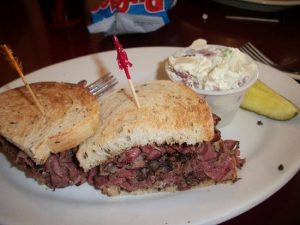
Goldmans Bagel Deli
2796 North Roosevelt Avenue
Key West
(305) 284-3354
goldmansdeli.com
Latest Review: 6/23/14
Real easy tale to tell you guys, Goldman’s is one of the best bagel/deli joints in Florida!
I singled out Goldmans’ pastrami on rye for special mention- but trust Jeff Eats when I tell you that- “everything” this joint makes kills! Of course, some “items” kill more than others, but they all kill!
If you’re into bagel/deli joints- Goldmans is an absolute must try!
Posted on June 23rd, 2014
***** Goldmans Bagel Deli, 2796 North Roosevelt Avenue, Key West, Florida 33040, (305) 294-3354.
Goldmans is a New York Kosher Style Bagel/Deli joint. Counter/booth/table seating.
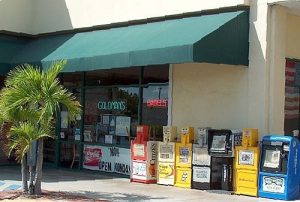
Goldmans has all kinds of breakfast stuff, sandwiches, burgers, soups, salads…the joint boils/bakes its own bagels-there are 12 different types of bagels.
You can check menu/prices/photos at www.goldmansdeli.com.
Jeff Eats, Mrs. Jeff Eats and a couple of friends recently did lunch at Goldmans-and I gotta tell you… the pastrami on rye, corned beef on rye, chicken salad on a toasted everything bagel, tuna salad on a toasted whole wheat bagel, potato salad/cole slaw were-real good.
Based on “this” outing…Goldmans has to- rank right up there with the best of South Florida’s bagel/deli joints.
Goldmans is a good joint to know about- if you live in Key West or just visiting-like we were.
Goldmans Bagel Deli is open Monday-Saturday 7am-4pm,Sunday 7am-3pm.
This contest started on 9/7/18. This contest has a winner.
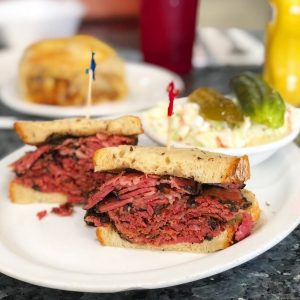
* Win A $25 Zinger’s Delicatessen Gift Card.
Jeff Eats got a $25 Zinger’s Delicatessen Gift Card for one of you guys!
The game- the first 25 “reader-comments” received – will be entered in a “blind hat pick”! You can submit as many comments as you’d like but- Please, only 1- reader comment – per day…play fair!
The $25 Gift Card is good at Zinger’s Delicatessen, 7132 Beracasa Way, Boca Raton, Florida 33433, (561) 826-7323. Check zingersdeli.com for menu/prices/info.
* Shea Stadium Concession Prices 1967.
Am I the only one around here who remembers 15 cent pizza slices? How about Cleon Jones?

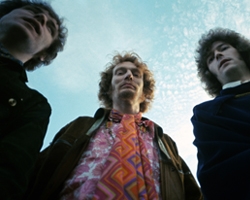
* The Music Of Cream: 50th Anniversary Tour.
This “one” was just announced…
Who booked this show- P.T. Barnum? I know Barnum never said it- but the phrase “There’s a sucker born every minute” definitly applies here…
Take a look at the musician lineup for the show!
If you must…
The Skinny:
The Music Of Cream: 50th Anniversary Tour
Friday, April, 12th, 2019 (8pm)
Parker Playhouse
707 Northeast 8th Street
Fort Lauderdale, FL 33304
Box Office: 954.462.0222
Tickets: parkerplayhouse.com
from parkerplayhouse.com
Fifty years since their earth-shaking debut album, the bloodlines of that hallowed trilogy of Ginger Baker, Jack Bruce, and Eric Clapton come together to pay tribute to Cream’s legendary four-album reign over the psychedelic frontier of the late 1960s.
Kofi BAKER (son of Ginger) and Malcolm BRUCE (son of Jack) unite with Will Johns (Eric’s Nephew* and son of Zeppelin/ Stones/ Hendrix engineer Andy) to unleash the lightning that electrified a generation. Feel the fire and the freedom of “Spoonful”, “Strange Brew”, “Sunshine of Your Love”, “White Room”, “Crossroads” and “Badge”. Listen to the stories and see them interplay with their mentors on the big screen. Master musicians whose lives have been steeped in the Cream spirit, celebrating an extraordinary legacy. Don’t miss this once-In-a-lifetime concert salute to the most innovative and explosive supergroup of all time, in the hands of those that knew them best.
* Exclusive Online Presale- Penn & Teller.
Not a fan…
Just in case you are…

Presale starts today (Thursday, 9/6/18) at 10am and ends tomorrow (Friday, 9/7/18) at 9am- Ticketmaster.com use Password: FOOLUS.
This contest started on 9/5/18. This contest has a winner.

* Win A $10 LaSpada’s Original Hoagies Gift Card.
Jeff Eats got a $10 LaSpada’s Original Hoagies Gift Card to give to one of you guys…
The game- the first 10 “reader-comments” received – will be entered in a “blind hat pick”! You can submit as many comments as you’d like but- Please, only 1- reader comment – per day…play fair!
The $10 Gift Card is good at any LaSpada’s location (laspadashoagies.com for locations, menus, prices, info).

***** Peters Road Deli, 4353 Peters Road, Plantation, Florida 33317, (954) 587-5456.
Got a real good reasonably priced sub/sandwich/salad/pasta joint for you guys to checkout- Peters Road Deli in Plantation.
Three guesses, how the joint got its name- and the first two guesses don’t count!
Simple tale here- order/pickup at counter, no inside or outside seating, menu of hot/cold subs-sandwiches/salads/pasta dishes, open Monday-Saturday 9am-5pm/closed Sunday.
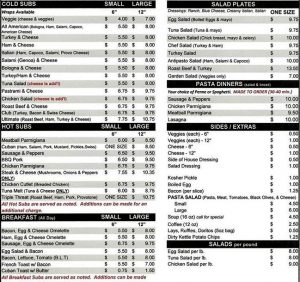
Jeff Eats and Mrs. Jeff Eats discovered Peters Road Deli a couple of weeks ago and I gotta tell you guys, the joint’s food absolutely killed!




Now- you guys and Jeff Eats both know that sub joints are literally a dime a dozen down here in sunny-Florida- with that in mind, trust me when I tell you that Peters Road Deli makes real (and I do mean real) delicious stuff!
Let me wrap Peters Road Deli up for guys by saying- that if the joint was a drop closer to Jeff Eats and Mrs. Jeff Eats’ Boca Raton abode- we’d be real-steady customers!